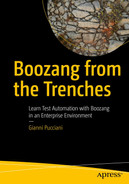Part ITesting Web Applications in an Enterprise Context, Why Boozang
Not everyone works at Google or Spotify...
Yes, it’s definitely true that not everyone works for large and famous software development companies.

A pyramid diagram. It includes user interface tests, service tests, and unit tests from top to bottom, along with increases in cost, time, and false negatives.
The large majority of IT people work in environments (finance, insurance, retail, healthcare, etc.) where the agile transition is still in progress and DevOps practices are not yet established. Most use a mix of technologies, legacy and not, self-hosted or on the Cloud. These IT units have limited budgets and are usually constrained by lack of resources and internal skills.
In these settings, End-to-End Test Automation becomes more and more relevant, and Boozang can step-up as a great fit.
This part is setting up the stage with context and a sort of business case for adopting Boozang in your work.
This is the smallest part of the book, so if you are in a hurry and want to jump into learning Boozang, skip ahead to Part 2. However, make sure to come back here to fully appreciate the rest of the book and the practical examples.
Chapter 1, “Web Test Automation in an Enterprise Environment,” defines the context and terminology for the practical parts of this book. I also cover aspects that may be of interest to readers with management responsibilities like Return on Investment (ROI) analysis.
Chapter 2, “Selenium: Best Practices and Pain Points,” covers some aspects of classic coded approaches to Test Automation and highlights some specific practices and challenges when using Selenium.
Chapter 3, “Meet Boozang,” talks about the PoC (Proof of Concept) and Pilot phases I have done before selecting Boozang and highlights the strengths of this tool.
Chapter 4, “The TCS Project,” presents the TCS project that will be used to explain the Boozang features applied to real use cases.
Chapter 5, “How Boozang Was Born,” tells the story of Boozang from its very early stages. This section comes directly from the founders of Boozang.
